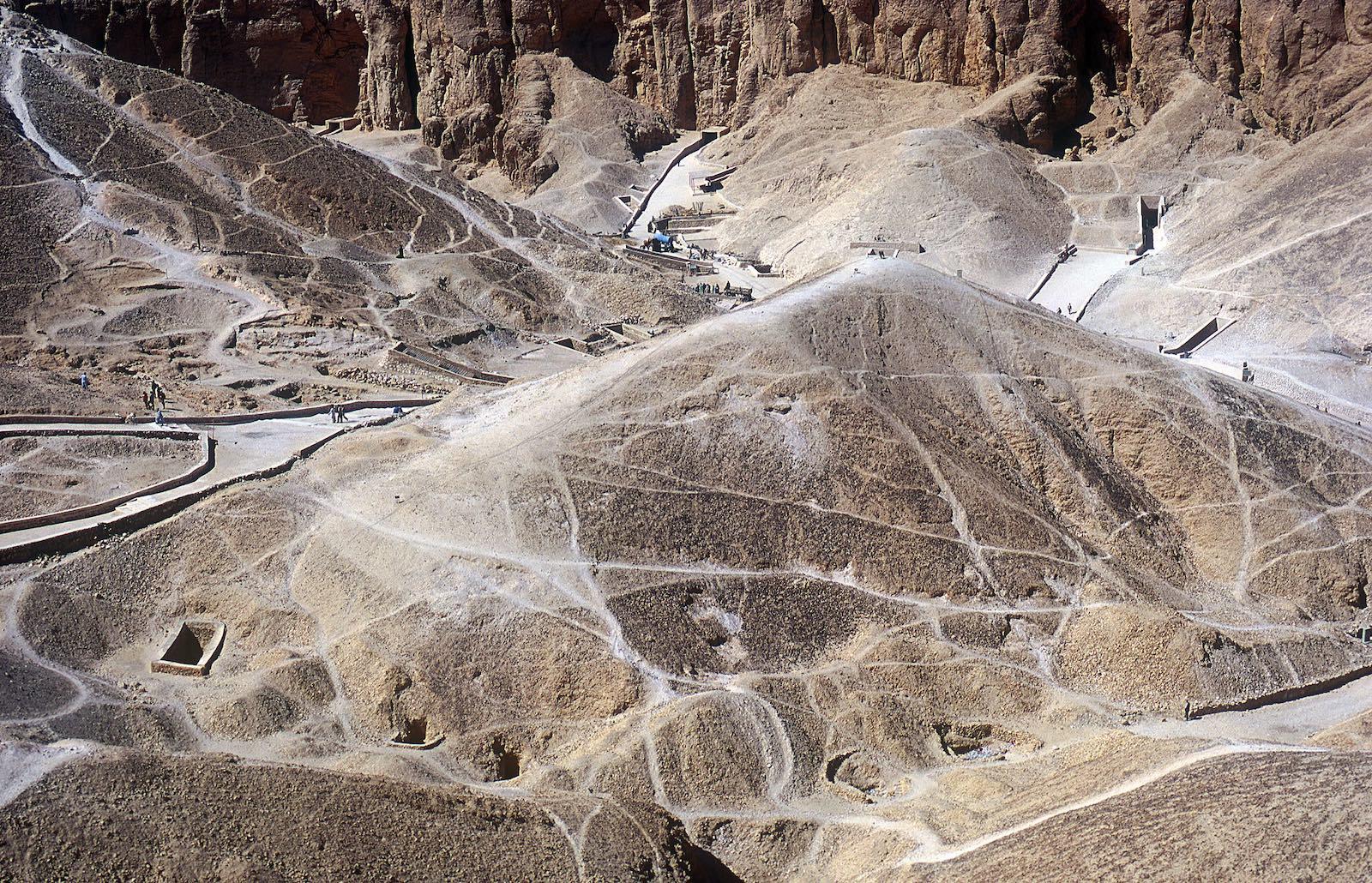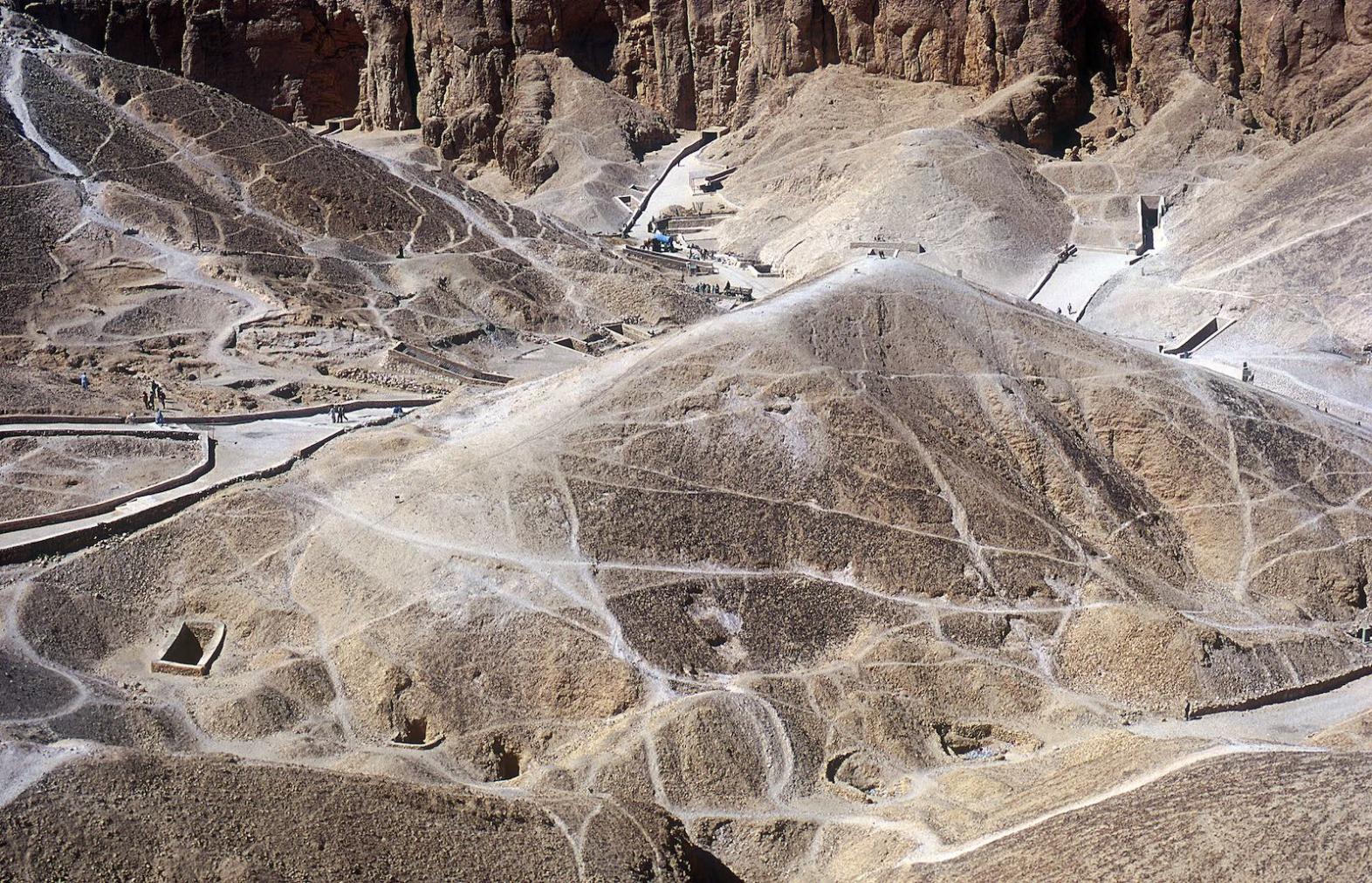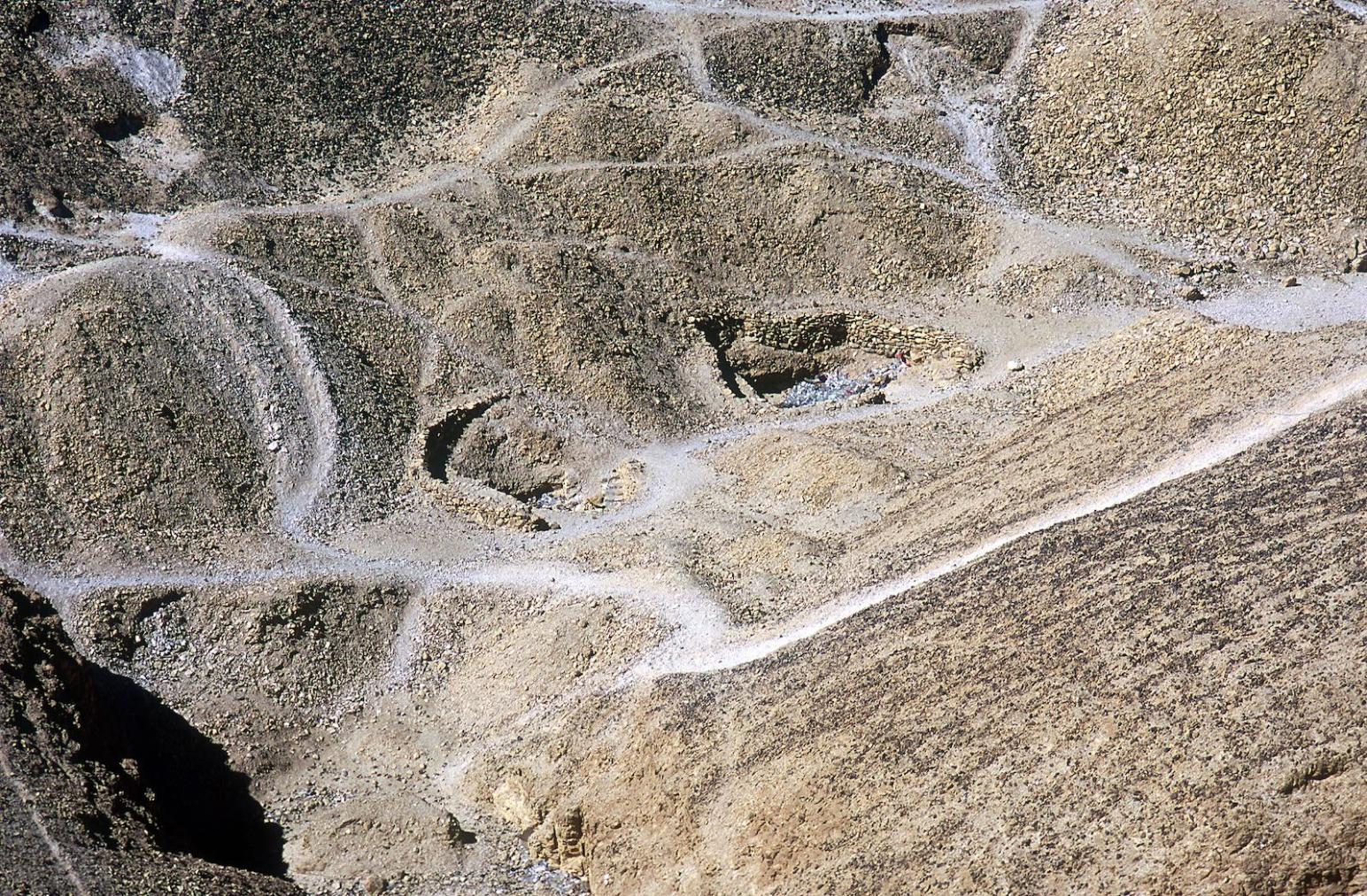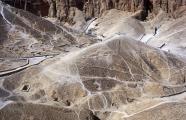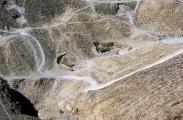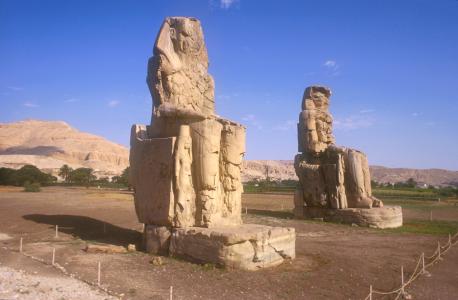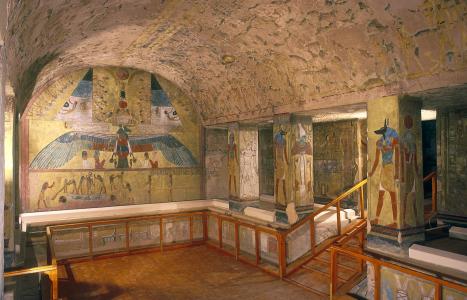KV 44
Unknown
Entryway A
See entire tombThe entrance is a deep shaft cut low in the west side of the wadi.
Chamber B
See entire tombThis well-cut chamber is trapezoidal.
Gate B
See entire tombThe gate leads into chamber B. A later blocking of the chamber was found intact by Carter.
About
About
KV 44 is located in the southeast branch of the main Wadi, close to KV 45. The tomb consists of a shaft entryway (A) and a single chamber (B). It was found undecorated.
Site History
The funerary furniture of the original owner of the tomb was robbed and according to Carter, only "rubbish" remained inside the tomb. The tomb lay open for some time, as the presence of several bees' nests indicate. The identity of the owner is unknown.
On the basis of topography and the possibility of a Kings' Valley burial for him, Thomas suggested that Anen, a son of Yuya and Thuyu, and possibly Anen's wife, were buried in the tomb. But there is no foundation for this, and Anen has his own tomb (TT 120) in Shaykh Abd al Qurna. The tomb was re-used during Dynasty 22 for Tentkerer, Lady of the House under Osorkon I, Heiufaa, and a songstress of Amen. While reclearing KV 44, Ryan discovered remains of seven individuals, probably of the first interment.
Dating
This site was used during the following period(s):
Exploration
Conservation
Conservation History
A metal grid was placed over the entrance shaft and a low rubble wall constructed around the opening to divert flood water.
Site Condition
The tomb was excavated by Donald Ryan of Pacific Lutheran University.
Articles
History of the Valley of the Kings: Third Intermediate Period to the Byzantine Period
Anatomy of a Tomb: Ancient and Modern Designations for Chambers and Features
Bibliography
Aston, David, Barbara Aston and Donald P. Ryan. Pottery from Tombs in the Valley of the Kings, KV 21, 27, 28, 44, 45, and 60. Cahiers de la céramique égyptienne. Cairo, IFAO. 6 (2000): 11-38.
Carter, Howard. Report on Tomb-Pit Opened on the 26th January 1901, in the Valley of the Kings Between no. 4 and no. 8. Annales du Service des Antiquités de l’Égypte 2 (1901): 144-145.
Helck, Wolfgang. Königsgräbertal. Wolfgang Helck, Eberhart Otto and Wolfhart Westendorf (eds.). Lexikon der Ägyptologie. 7 vols. Wiesbaden, 1972-1992. 3: 521.
Reeves, Carl Nicholas. Valley of the Kings: The Decline of a Royal Necropolis (= Studies in Egyptology). London: KPI, 1990. Pp. 155-156.
Rowe, Alan. Correction and Additions to Report on Tomb-pit Opened on the 26th January 1901 in the Valley of the Tombs of the Kings between No. 4 and No. 8 by Howard Carter. Annales du Service des Antiquités de l’Égypte 41 (1942): 346-347.
Ryan, Donald P. Some Observations Concerning Uninscribed Tombs in the Valley of the Kings. In: Carl Nicholas Reeves, After Tut'ankhamun: Research and Excavation in the Royal Necropolis at Thebes. London: KPI, 1992. Pp. 21-27.
Ryan, Donald P. The Valley Again. KMT 3, 1 (1992): 44-47.
Ryan, Donald P. Exploring the Valley of the Kings. Archaeology 47, 1 (1994): 52-61.
Thomas, Elizabeth. The Royal Necropoleis of Thebes. Princeton: privately printed, 1966. P. 162.
